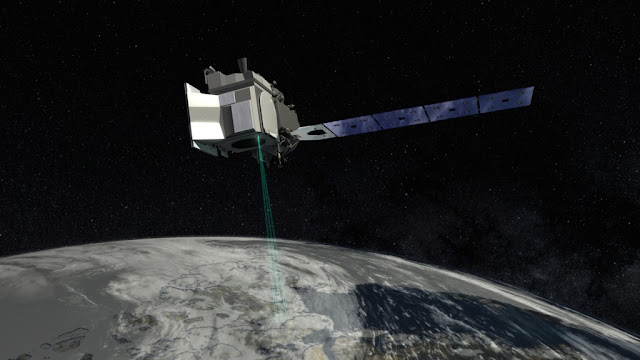NASA new satellite ICESAT-2
In September, NASA will dispatch a laser instrument and start a mission to gauge changes in the height of Earth's polar ice. NASA's Ice, Cloud and Land Elevation Satellite-2 (ICESAT-2) will gauge the normal yearly height change of land ice covering Greenland and Antarctica to inside the width of a pencil, catching 60,000 estimations for every second.NASA is propelling a laser-equipped satellite one month from now that will quantify - in exceptional detail - changes in the statures of Earth's polar ice to comprehend what is causing ice sheets to soften quick.
As of late, commitments of liquefying from the ice sheets of Greenland and Antarctica alone have raised worldwide ocean level by in excess of a millimetre a year, representing roughly 33% of watched ocean level ascent, and the rate is expanding.
Called the Ice, Cloud and Land Elevation Satellite-2 (ICESat-2), the mission is booked to be propelled from Vandenberg Air Force Base in California on September 15, NASA said in an announcement late on Thursday.
ICESat-2 will quantify the normal yearly rise change of land ice covering Greenland and Antarctica to inside the width of a pencil, catching 60,000 estimations consistently.
"The new observational innovations of ICESat-2 will propel our insight into how the ice sheets of Greenland and Antarctica add to ocean level ascent," said Michael Freilich, Director of the Earth Science Division in NASA's Science Mission Directorate.
ICESat-2 will enhance NASA's 15-year record of checking the change in polar ice height.
It began in 2003 with the principal ICESat mission and proceeded in 2009 with NASA's Operation IceBridge, an airborne research battle that monitored the quickening rate of progress.
ICESat-2's Advanced Topographic Laser Altimeter System (ATLAS) measures stature by timing to what extent it takes singular light photons to set out from the rocket to Earth and back.
"Chart book expected us to grow new advances to get the estimations required by researchers to propel the exploration," said Doug McLennan, ICESat-2 Project Manager.
"That implied we needed to design a satellite instrument that will gather fantastically exact information, as well as will gather in excess of 250 fold the number of stature estimations as its ancestor," he included.
Map book will fire 10,000 times each second, sending several trillions of photons to the ground in six light emissions light.
With such a large number of photons coming back from various bars, ICESat-2 will get a considerably more point by point perspective of the ice surface than its forerunner.
As it hovers Earth from shaft to post, ICESat-2 will quantify ice height statures along a similar way in the polar areas four times each year, giving regular and yearly observing of ice height changes.
Past the shafts, ICESat-2 will likewise quantify the stature of sea and land surfaces, including woodlands.



 Anit tarafdar
Anit tarafdar


 Posted in:
Posted in: 
0 Comments:
Post a Comment